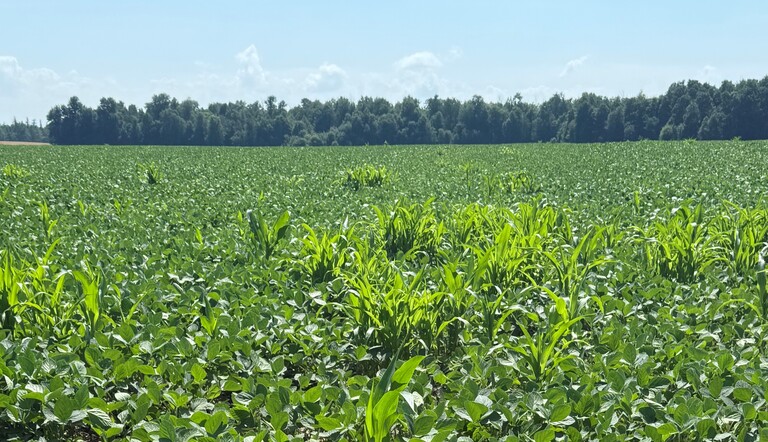
Trait-Driven Herbicide Strategies for Soybeans

By: Drew Thompson, TSA Eastern Canada
When planning for seed selections for the next crop year a few considerations need to be made. With soybeans, selection is not just varieties, but also traits, which tends to drive herbicide programs. And associated with the different programs are impacts on graminicide efficacy. Below is a quick review of what to keep in mind.
With non-traited beans it is known that burning, POST broadleaf herbicides can antagonize graminicides. The 'fops' are generally less impacted as esters in the formula (ie. LEOPARD® is quizalofop-P-ethyl) help with uptake. As such, broadleaf plus grassy herbicide mixes can be effective, although the grassy product should be at the higher end of the labeled rate range.
'Dims' (clethodim, ie. ARROW ALL IN®) are challenged by a weed's cuticle, and when the cuticle is altered/damaged by a broadleaf herbicide, uptake is further impaired. Given this, it is strongly recommended that regardless of rate, 'dims' and broadleaf herbicides not be mixed.
With Enlist E3 soybeans, be mindful when mixing a graminicide with an Enlist (One or Duo) herbicide. These herbicides strongly antagonize the 'fops', and such mixtures should not be made. 'Dims' experience some antagonism, but grass control can be successful in mixes with Enlist herbicides1. Higher rates are required and grassy weeds (ie. vol. corn) should be on the smaller side (don't let them get over your knees!).
For Xtend/Xtend Flex genetics, dicamba is known to cause some antagonism to both dims and fops, particularly for vol. corn. This can generally be overcome by increasing the graminicide rate to the higher end of the labeled rate range. It is uncertain if POST applications of dicamba will be allowed for 2026, but a reminder just in case.
Some traits enable the use of glufosinate, which is not a powerful grass product, and can also be viewed as a burning herbicide. However, for sensitive species, glufosinate plus a graminicide (dim or fop) does not seem to exhibit antagonism. For species tolerant to glufosinate (vol. corn), again no antagonism, and glufosinate's surfactant tends to improve graminicide activity.
And while the focus of this note is next year's traits and herbicide programs, it will be important to remember what corn traits were grown in the last crop year. PowerCore Enlist varieties are tolerant to 'fop' products, so if such varieties were grown, and vol. corn is anticipated to be a problem, a dim product like ARROW ALL IN® will be required.
Referenced Literature: 1 2020-NCWSS-Poster-Marcelo-Zimmer.pdf

